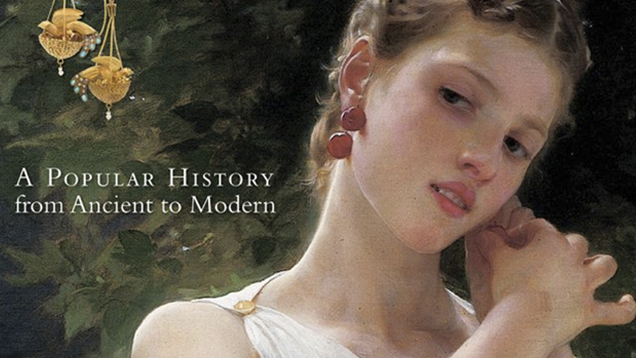Books: I Love Those Earrings: A Popular History from Ancient to Modern

Merrill’s is a wonderful viewpoint, one that offers a fresh translation of the history of jewelry. She pays special attention to the context and significance of earrings and other jewelry, often working from an art historian’s perspective. She covers an impressive expanse of time and geography with a collection of observations and stories arranged chronologically in an effort to humanize a subject that’s often associated with royalty and fame. Merrill mixes her own cultured experiences with those of the noble and storied to link ordinary people with celebrities and goddesses.
As virtuous as this inspired ambition may be, the message presented in the title and summary of the book does not play out in harmony. Merrill’s introductory invitation to “…raid the jewelry boxes of the prestigious and the more representative women of history…” suggests an exclusive, and visual, view of famous collections, a private and privileged peek into the boudoirs of queens and dressing rooms of movie stars. Disappointingly, this happens only once, with the inclusion of one painting of Jane Stanford’s auction collection, circa 1898.
By title and summary alone, the reader might also expect to find impressive photography of famous pairs of earrings, large in size and with great resolution. This is not the case. Most images are smaller in scale and arranged and captioned irregularly. Images that would support the text are not shown. Several stories would benefit from a series of timelines or maps, but these are not included.
Similarly, the format and layout are not representative of the sentiment and scholarship inside. While the percentage of white space on each page, the paper, and the printing quality promise vibrant, large-scale images and precise editing, this is not what is found within the pages. The background color of excerpts (light pink) is irritating at best, and worse, oversized images of earrings are often partially hidden by these dedicated boxes.
The most memorable musings and thought-provoking examinations in the book include the dynamic statements and comprehensive reflections throughout, such as the powerful call to recognize how meaningful earrings, like all pieces of jewelry, are. There’s plenty of evidence that they have been crafted, worn and celebrated the same way for thousands of years. Additionally, Merrill’s personal stories, those about her coauthor Chris Filstrup and the collection of prose and poetry at the end of the book—dedicated to lost earrings and lost loves—are the most memorable moments of the text. These high points and intriguing theories would have been better served by a revised title, theme, and size.



